2025
Crouching (0.44), Covering torso(0.52), Sad(0.23), Nudity likelihood (0.61)
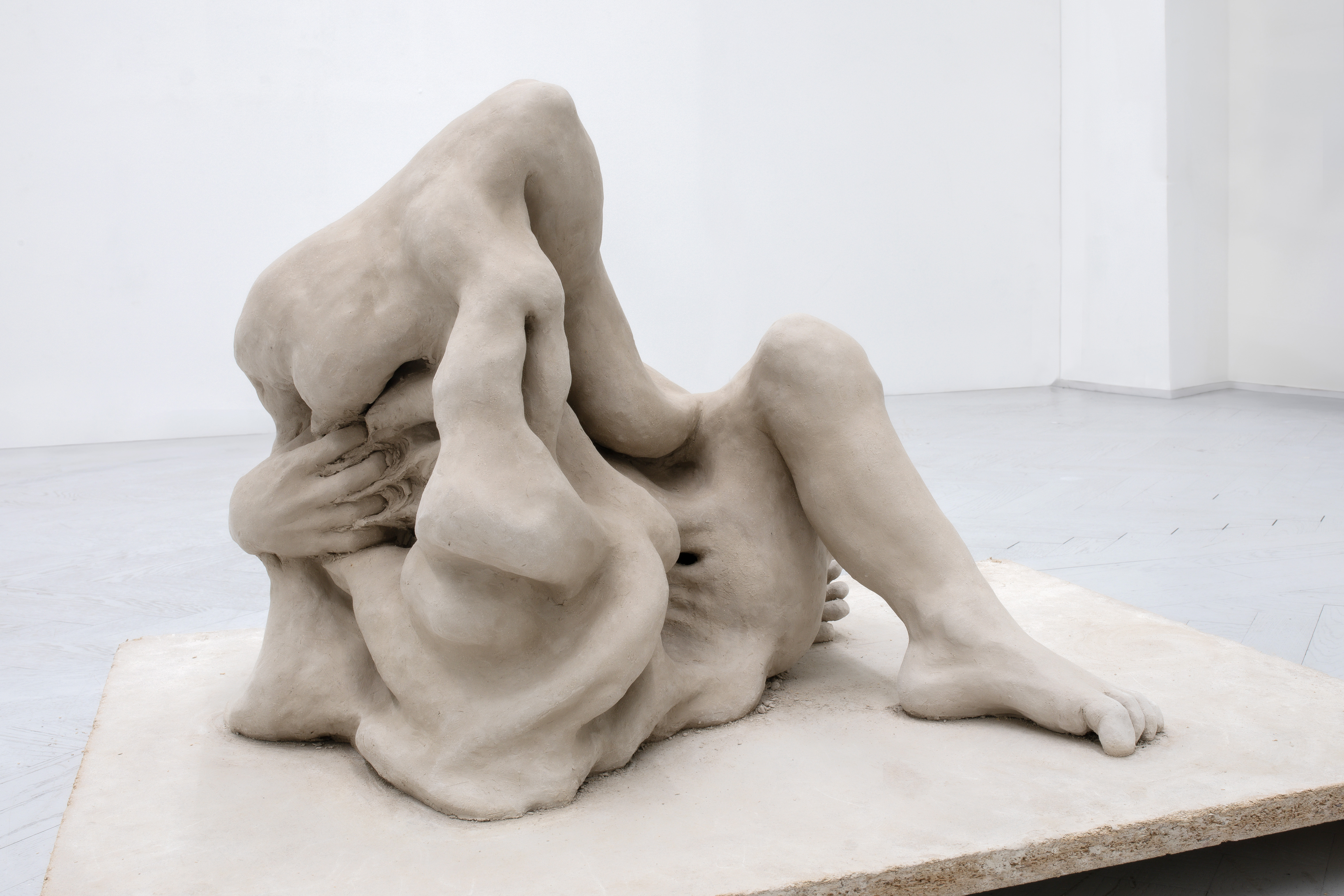
Sculpture‘ Crouching (0.44),
Covering torso(0.52), Sad(0.23), Nudity likelihood (0.61)’
[Pose estimation algorithm, Clay]
80 x 65 x 40 cm
2025
Video ‘False positive’)
[Aluminium, Ipad, Pose estimation algorithm, Camera]
29 x 11 x 5 cm
Full HD
2025
Ears ‘Test tiles’
[Clay, Copper Sulfate, Racomitrium microcarpon, Slime mould]
17 x 17 x 9 cm
2025
Sound ‘How to read character in the face and to
determine the capacity for love, business, or crime’
[Book: Physiognomy by Leila Holt 1864,
Text-to-speech algorithm, Bone conduction speaker]
8:31 minutes
2025
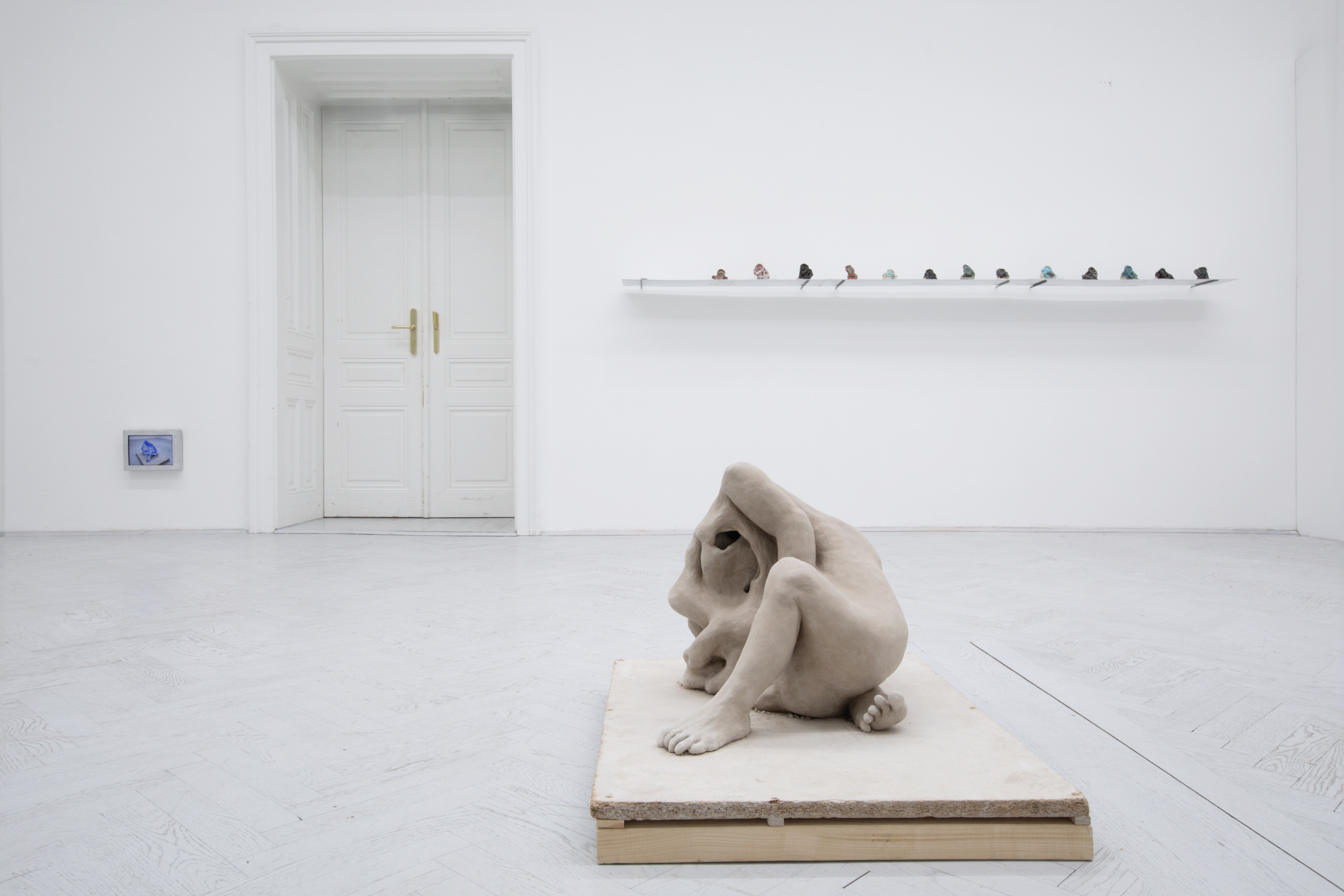
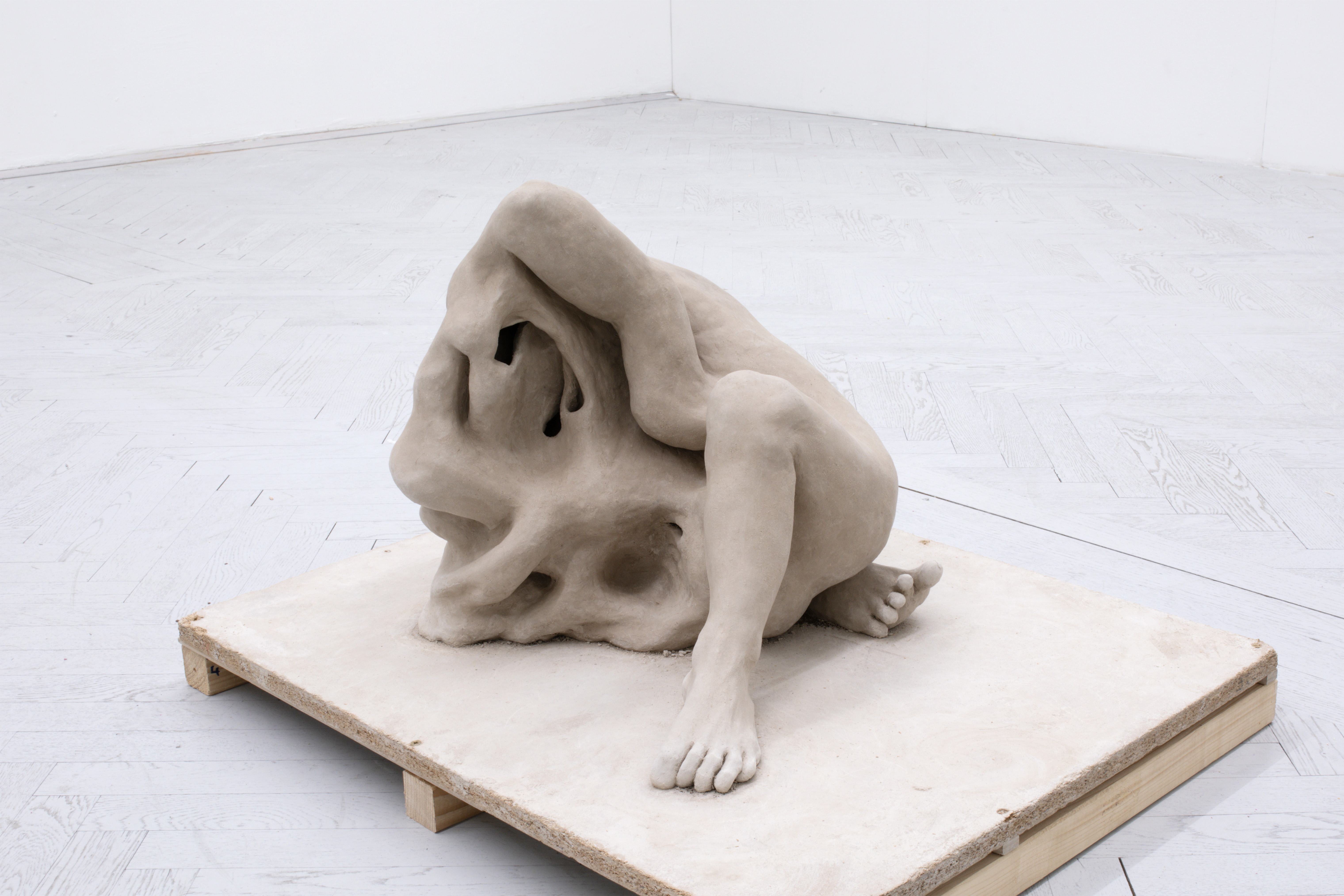



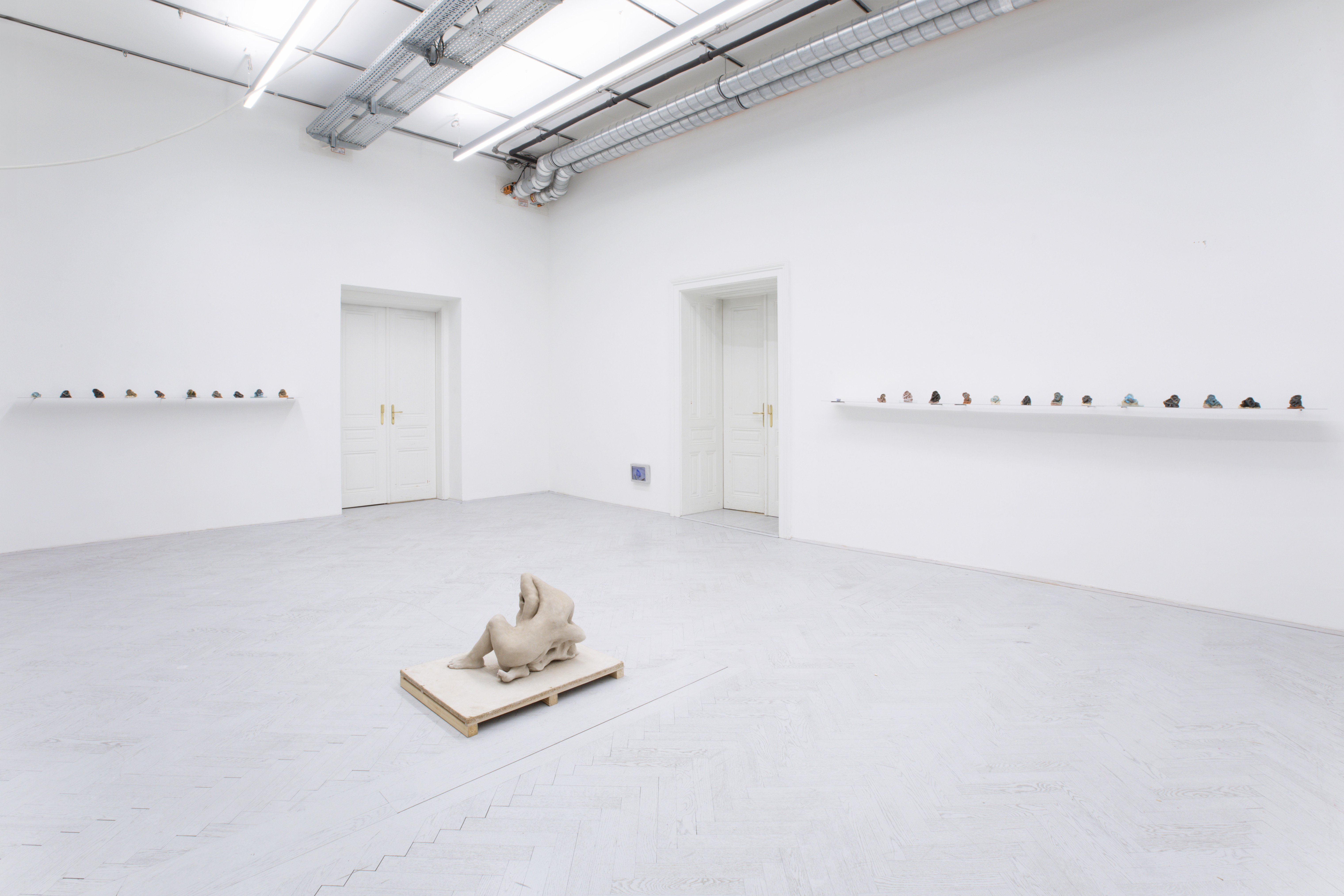
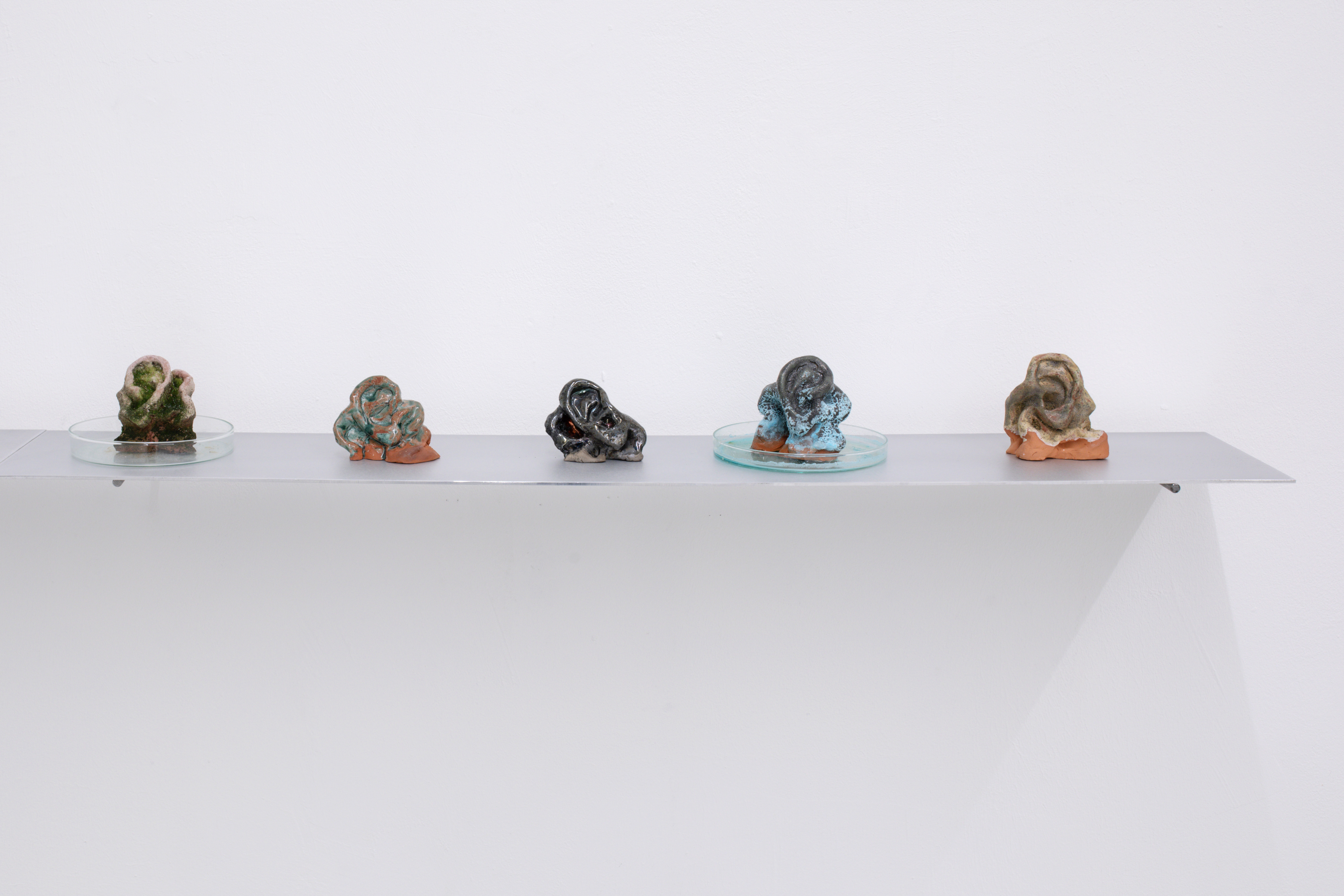
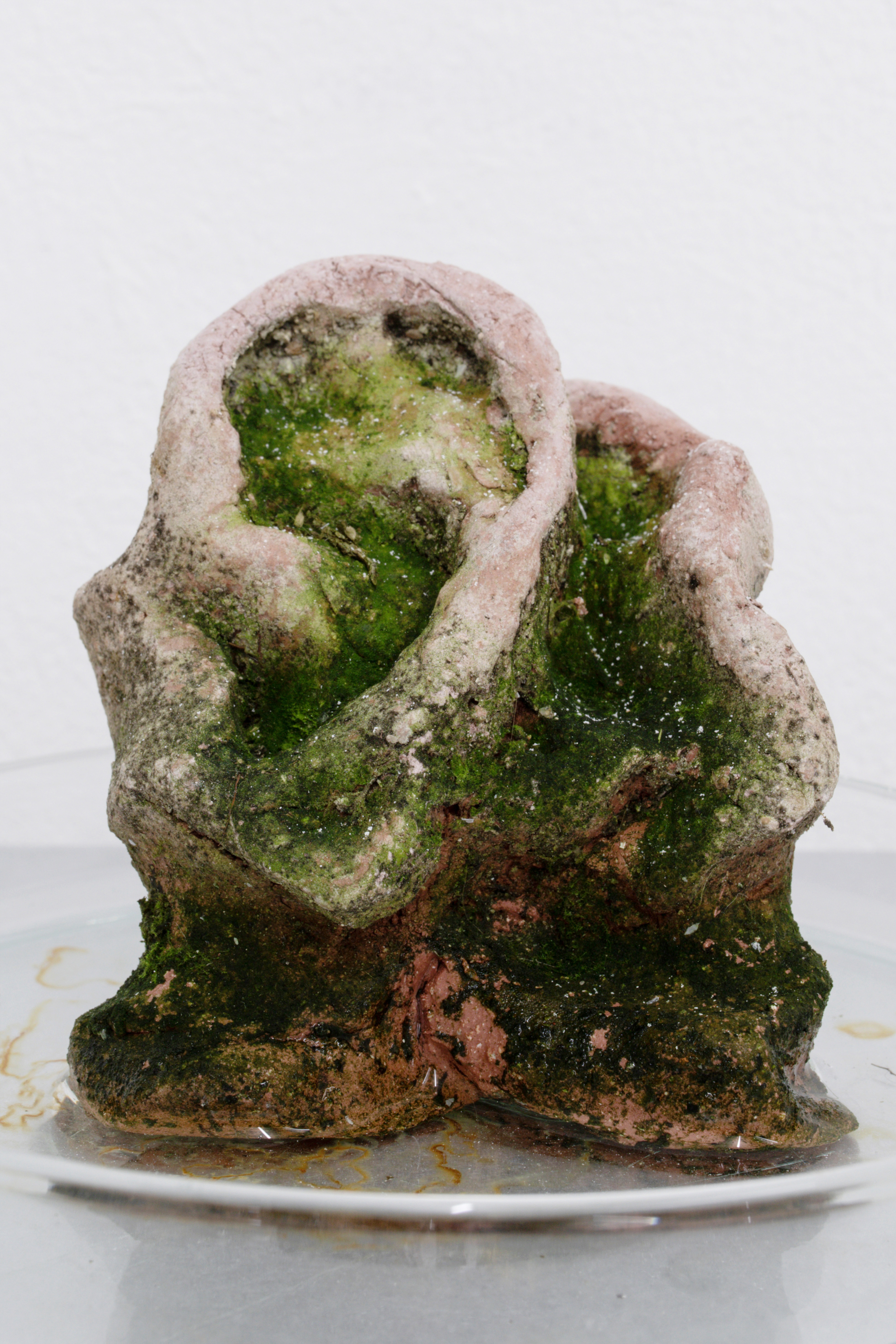



Visual systems have long sought to render bodies legible and determine which bodies get attention and which remain unseen, reinforcing adaptive behavior. The classical canon of proportion once codified ideal beauty in sculpture; physiognomy read character and social worth from facial features. Carried through art, these visual codes shape how bodies are read, ranked, and valued. Today, this practice persists invisibly within social media algorithms and biometric surveillance technologies, turning gestures into probability scores, and the body into numbers.
In response, Kind hands part of her artistic agency to these recognition technologies. Malleable blobs of clay are shaped and reshaped by hand in dialogue with computer vision. This feedback loop between gesture and code continues until the algorithm detects the clay as something “worth attention.” At that moment of recognition, the sculpture is finished, materializing the threshold where the machine mistakes its own projections for a human body. This point marks the completion of the shape, a false positive where limbs act as lures and silhouette suggest torso.
The algorithmic gaze becomes visible in the accompanying video work; a rentless machinic eye scanning, measuring, and labeling the body: Crouching (0.44), Covering torso(0.52), Sad(0.23), Nudity likelihood (0.61). Revealing the classificatory violence beneath the promise of neutral vision.
Beneath this fleeting recognition lies the act of measuring, comparing, and selecting. Traditionally, test tiles are used to study and judge glaze behavior for the final piece. Kind replaced these tiles with ears, pairing them with a generated child’s voice reading aloud from an 18th-century physiognomy manual, judging character and worth of ears. The innocent tone of the voice contrasts with the confident judgement, mirroring the way modern classification algorithms inherit and automate older cultural assumptions and how recognition itself becomes a site of power.
![]()
In response, Kind hands part of her artistic agency to these recognition technologies. Malleable blobs of clay are shaped and reshaped by hand in dialogue with computer vision. This feedback loop between gesture and code continues until the algorithm detects the clay as something “worth attention.” At that moment of recognition, the sculpture is finished, materializing the threshold where the machine mistakes its own projections for a human body. This point marks the completion of the shape, a false positive where limbs act as lures and silhouette suggest torso.
The algorithmic gaze becomes visible in the accompanying video work; a rentless machinic eye scanning, measuring, and labeling the body: Crouching (0.44), Covering torso(0.52), Sad(0.23), Nudity likelihood (0.61). Revealing the classificatory violence beneath the promise of neutral vision.
Beneath this fleeting recognition lies the act of measuring, comparing, and selecting. Traditionally, test tiles are used to study and judge glaze behavior for the final piece. Kind replaced these tiles with ears, pairing them with a generated child’s voice reading aloud from an 18th-century physiognomy manual, judging character and worth of ears. The innocent tone of the voice contrasts with the confident judgement, mirroring the way modern classification algorithms inherit and automate older cultural assumptions and how recognition itself becomes a site of power.
